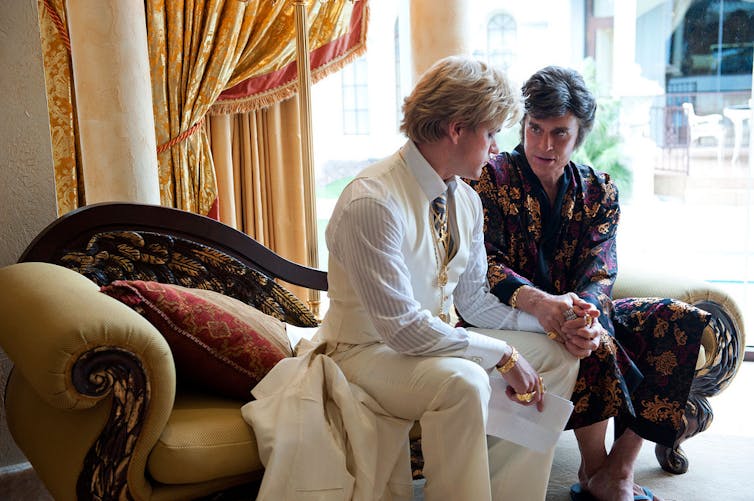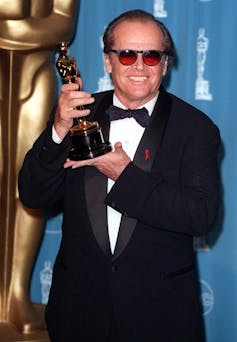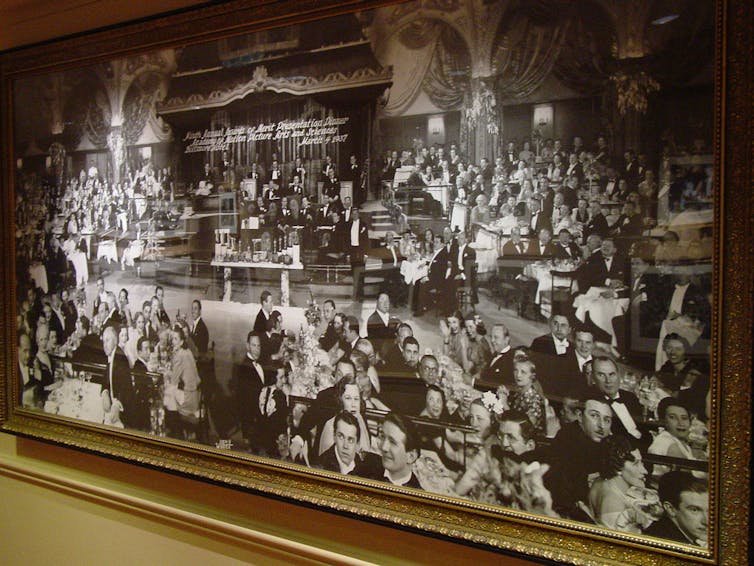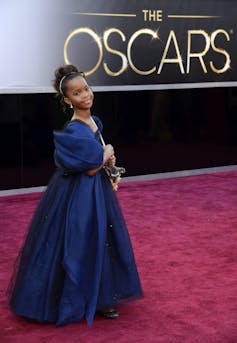Opinion: Why Oscars are completely unreliable
The first thing to understand about the Oscars is that, as a measure of the aesthetic value of films, they are completely unreliable. To understand why this is the case, we need to know what exactly “The Academy” is and how it operates.
The Academy of Motion Picture Arts and Sciences, established in 1927, is an invitation-only honorary society made up of people who work in the film industry, mainly in Hollywood. The Academy has several branches: one for actors, one for editors, one for executives, and so on. Memberships, once gained, do not expire.
The Academy was originally formed as an organisation that could deal with the internal politics of Hollywood, such as labour disputes, but also to enhance its external reputation.
Photo from the 1937 Academy Awards. Flickr/Curt Gibbs
While cinema itself has been wildly popular in America since its beginnings, Hollywood quickly gained a reputation as a hotbed of vice and sleaze. The damaging Fatty Arbuckle rape and murder scandal of 1921 was still fresh in the collective memory five years later at the founding of The Academy.
The Academy does things other than give out awards. It has a library in Beverly Hills that is an important archival resource for film scholars. I’ve been there to do research; it’s top notch. But all the other activities of the Academy are dwarfed by their annual awards ceremony, which was first held in 1929.
It works like this: Academy members are sent a “Reminder List of Eligible Releases” from which to make their nominations. Films on that list have met a few benchmarks. For instance, a feature film’s premiere must have been in a movie theatre, and the film must have run in an L.A. county theatre with paid admission for a period of seven consecutive days.
That’s why one of this year’s best American films is ineligible for Oscars. Although it screened in cinemas here in Australia and in other territories, Steven Soderbergh’s Liberace biopic Behind the Candelabra was made for US premium cable channel HBO and did not receive a theatrical release in the States.

Before the nominees are decided in the Oscars race, a whole lot of other bodies have their say. The Oscars is merely the culmination of a long “awards season” that begins months earlier. Some of these other bodies, such as the National Society of Film Critics, style themselves as a kind of anti-Oscars, purely concerned with film as art.
Armond White (yes, he of the Steve McQueen as “embarrassing garbage man”), when he was chair of the New York Film Critics Circle, told me that he thought of his organisation as:
a bastion of East Coast intellectual elitism, and the ‘laurel-leaf’ tradition of judging artistic works.Meanwhile other organisations, such as the Broadcast Film Critics Association, and the Hollywood Foreign Press Association (who put on the Golden Globes) seek to ape the Oscars by predicting at their own ceremonies the likely Oscars contenders. All of this “awards season” build-up figures in the mind of Academy voters, and certain films emerge from the process with an air of inevitability.
In most award categories the members of each branch vote exclusively for their respective award category. The art directors, for instance, select the nominees for Best Production Design. After a few weeks the results are tabulated by accountants, the nominees in each category are finalised, and the final ballots are prepared.
There is a two-week period between the final ballots being sent out and the deadline for voting. It is in this window that production companies mount enormous campaigns to secure votes for their nominated pictures. This is the point of those “For Your Consideration …” ads you might have seen in US magazines.
Harvey Weinstein, formally of Miramax and now of The Weinstein Company, is regarded as the most effective Oscars campaigner. Through a combination of extravagant advertising outlay, lavish schmoozing, and—some have claimed—more Machiavellian tactics, Weinstein has managed to convince Hollywood-at-large of what we can agree in retrospect is some thoroughly middlebrow nonsense. See Chicago and Shakespeare in Love (actually don’t).
The seminal book on cultural prizes is James F. English’s 2005 The Economy of Prestige. In it English shows that “prizes have always been of fundamental importance to the institutional machinery of cultural legitimacy and authority”, that they are “machines for securing and extending their own authority”. This is instructive when we think about the Oscars, and what they’re for.

Jack Nicholson won Best Actor at the 70th Academy Awards for his role in As Good as it Gets. Featureflash / Shutterstock.com
A 2012 Los Angeles Times study of the Academy’s nearly 6,000 person membership showed the following demographic breakdown: the Academy is 94% white, 77% male, 14% under the age of 50, and has a median age of 62. Some 33% of members are previous winners or nominees of Academy Awards themselves.
If we think of The Oscars as a machine for consolidating and extending the power of its membership — a coterie of old white men at the apex of the entertainment-industrial complex (I see you, Jack) — then we begin to understand that the Oscars are a poor instrument for objectively identifying the best of film as art.
The interests of film art and film industry do not necessarily coincide.
Quvenzhane Wallis arrives for the 2013 Academy Awards. Mike Nelson/EPA
The inaugural Oscars ceremony in 1929 acknowledged the contradiction at the heart of the exercise. In effect it gave two best picture awards. One for “Outstanding Picture” to World War I flyer drama romance Wings; one for “Unique and Artist Picture” to Sunrise: A Song of Two Humans.
Wings is now little more than an historical footnote, while Sunrise is regarded as not only one of the pinnacles of the silent cinema, but of cinema. It was number five on the BFI’s 2012 list Top 50 Greatest Films of All Time. It is instructive that the discontinued Oscars category contained the enduring work.
It’s not that artistically excellent films can’t be nominated for, and win, the “Outstanding Picture” successor “Best Picture” award. It’s just that these films are competing against a lot of contradictory impulses.
Will this year’s Best Picture be one like 2007’s No Country For Old Men – a film that will be watched 50 years from now? Or one like 2008’s Slumdog Millionaire: a film for which, six years later, we have to strain to recall what the fuss was about?
This article was originally published on The Conversation. Read the original article.
(Disclaimer: The opinions expressed above are the personal views of the author and do not reflect the views of ZMCL)



